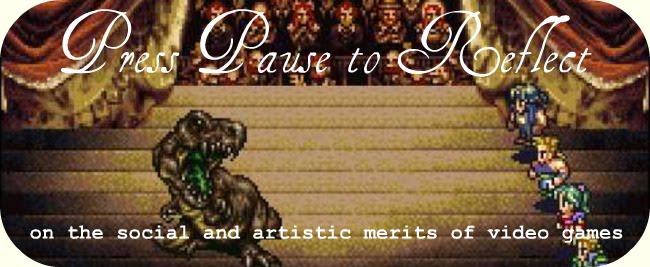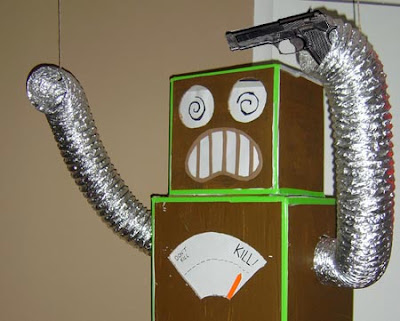by C.T. Hutt
Politicians and concerned parents often criticize video games for encouraging insensitivity towards violence. Children should not be allowed to play violent video games and it is incumbent upon parents to make sure that they do not do so. That being said, it is an undeniable fact that action, and often violent action, is the central mechanic of many video games. Without a dragon to slay, a cause to fight for, or a horde to overcome, many video games would be too boring to play. This precept might explain why the romantic comedy genre has not yet found a place in the popular gaming market. Action games such as Uncharted, Half-Life, Mass Effect, and Gears of War are among the most popular games in the medium and all rely on the challenge of being an effective killer and survivor. Developers are receptive to the player’s desire for realistic action, but are also fairly sensitive to growing concerns that kill crazy violence with no moral compass is not well received by mainstream media (please see every news story ever written on GTA). As gamers we want to square off against the most dangerous prey, humanity, but also want to believe that our characters are the good guys. As such, violence in action games is usually directed at enemies which walk and talk and fight like people, but for whom we feel little pity when blowing away en masse, such as:
In Gears of War, gamers are called on to do a whole lot of killing. Since pushing a chainsaw bayonet through the chest of a screaming human being might be considered mentally scarring to anyone, the Cogs in Gears of War square off against an army of human-like (but not quite human) monsters called Locusts. In Dragon Age: Origins the protagonist slaughters their way through thousands of demonic Darkspawn to reach their goals. Whether you are facing off
 against orcs, aliens, or genetically engineered freaks, what you are really fighting against is a personification of the dark side of humanity.
against orcs, aliens, or genetically engineered freaks, what you are really fighting against is a personification of the dark side of humanity.Dehumanizing one’s enemies is a propaganda tactic as old as war itself. So long as we can refer to our enemies as outsiders, whether we label them as a separate species or use a racial slur to describe them, we can justify taking their lives without feeling as though we have done anything wrong. Video games let us take this idea a step further and change the actual image of adversaries rather than just our perceptions of them, allowing us to pull the trigger again and again without stopping to ask why.
Nazis
Since the end of World War 2, Germany has gone to
 great lengths to live down its recent past. Every nation on the planet with a shred of decency or ethics must eventually come face to face with its share of national shame. As leaders in the international effort to secure transnational peace and liberalization, I’m sure this feeling is especially acute for the citizens of modern Democratic Germany when games like The Saboteur and Call of Duty are released to serve as a reminder of the terrible events perpetrated by the National Socialist Workers Party under Adolf Hitler. As the current U.S. president is fond of saying, the Third Reich was on the wrong side of history. Whatever a protagonist does to a Nazi in a video game seems justified because the people playing the game are presumably aware of the atrocities the Nazis committed during the war. Hypothetically, when you shoot a video game Nazi you are working to prevent or punish an unseen video game holocaust. Developers use a similar mentality in almost all games where you are up against some kind of army or paramilitary force. The Inglourious Bastards standard of ethics in video games (i.e., anything I do to you is alright, because you will always be worse than I am) has been an industry standard since the original Wolfenstein.
great lengths to live down its recent past. Every nation on the planet with a shred of decency or ethics must eventually come face to face with its share of national shame. As leaders in the international effort to secure transnational peace and liberalization, I’m sure this feeling is especially acute for the citizens of modern Democratic Germany when games like The Saboteur and Call of Duty are released to serve as a reminder of the terrible events perpetrated by the National Socialist Workers Party under Adolf Hitler. As the current U.S. president is fond of saying, the Third Reich was on the wrong side of history. Whatever a protagonist does to a Nazi in a video game seems justified because the people playing the game are presumably aware of the atrocities the Nazis committed during the war. Hypothetically, when you shoot a video game Nazi you are working to prevent or punish an unseen video game holocaust. Developers use a similar mentality in almost all games where you are up against some kind of army or paramilitary force. The Inglourious Bastards standard of ethics in video games (i.e., anything I do to you is alright, because you will always be worse than I am) has been an industry standard since the original Wolfenstein. This gets into some fairly shaky ethical territory; all war is morally ambiguous to the people fighting in it. Again, children should not be playing these games and before anyone picked up a title like this I would encourage them to at least become acquainted with the basic history behind the game. Modern political discourse is littered with ham-fisted references to fascism and Stalinist communism on the part of both the major parties in the United States. Telling impressionable people in one area of society that it is okay to kill Nazis and telling them in another area that “the X party are a bunch of Nazis” could lead to some very foolish consequences.
 Someone Wearing a Mask
Someone Wearing a MaskIf developers feel that they absolutely must include a mass of antagonists who are dead to rights human beings (and not goose-stepping swastika jockeys) they often at least have the decency to cover their faces. You may have used an X-wing to crush swarms of storm troopers in Star Wars: The Force Unleashed but they all wore their giant face covering helmets so you never saw the fear or anguish in their eyes as you did it. Similarly, the full plate mail worn by the knights in Demon’s Souls robs them of all character and individuality. You also can’t see them spit blood when you stab them. Hell, they could be smiling under all that steel for all you know. Whether you are fighting ninjas, knights, terrorists, assassins, bank robbers, or whoever, more often than not developers will cover their faces with something.
Sometimes, instead of a literal mask, developers choose to pan away from the worst of the violence taking place or, as in Empire Total War, make the characters so small and ill defined that we cannot make out their individual expressions. We are not the Joker, we don’t savor the little emotions in an opponent’s face when they expire.

This guy is just asking for it












 It hit me while I was playing God of War, marveling at some of the great design decisions and the intricate, incredible dungeon of the Temple of Pandora. It was new and familiar at the same time, and I could see how it spawned a whole category of action games at the same time as it drew on Zelda to create one of the most complicated dungeons I'd ever seen. I wondered how it was that I’d never played it before, and gloried in the fact that I finally could. God of War is a piece of video game history now, and while it may not be a long history, there are plenty of games worth revisiting.
It hit me while I was playing God of War, marveling at some of the great design decisions and the intricate, incredible dungeon of the Temple of Pandora. It was new and familiar at the same time, and I could see how it spawned a whole category of action games at the same time as it drew on Zelda to create one of the most complicated dungeons I'd ever seen. I wondered how it was that I’d never played it before, and gloried in the fact that I finally could. God of War is a piece of video game history now, and while it may not be a long history, there are plenty of games worth revisiting.